Suppose you choose Corrugated Stainless Steel Tubing (CSST) instead of traditional iron pipes for your home gas piping; congratulations on making your life much easier. Working with CSST tubing is significantly simpler than with iron pipes. They are lightweight, flexible, and easy to cut and install. However, paying attention to details is a must to ensure a seamless installation. In our previous articles, you can find information on Codes and Regulations Related to Installing a CSST Flexible Gas Line, and we have also provided a step-by-step installation guide.
Read more here: How to Install a CSST Flexible Gas Line.
Also, if you plan to remove and replace your existing iron pipes with CSST tubing, take advantage of this article: How to Hook Up a Gas Line During a Home Renovation: Tracing the Line and Testing for Leaks.
For now, let’s discuss how to run a CSST flexible gas line from meter to appliances. Take advantage of this article; it is full of valuable information. Let’s get started!
Gas Meter Mounting Methods
Many homes in Philadelphia have gas meters on the outside. This meter delivers gas and tracks how much you use, which determines your bill. CSST manufacturers usually allow you to connect your home’s CSST flexible gas lines to the meter in two ways, depending on how the meter is mounted.
Unsupported Meters
If the meter is supported only by gas piping from the ground, it is considered an unsupported one. In Figure 1, you can see the meter leans only on the gas supply line coming from the ground and is not supported by anything else to keep it securely in place.
Figure 1: Unsupported meter
Figure 2 shows another example of an unsupported gas meter. It is supported only by gas piping from the ground in and out of the meter.
Figure 2
Supported Meters
Basically, there are two types of supported meters. The meter could be building-supported or self-supported.
Building-Supported Meters
A building-supported meter connects to the building in two ways:
- Iron pipes coming from the meter and a termination fitting (see Figure 3): This means the meter is connected to the building using rigid iron pipes, and there’s a termination fitting involved.
- Brackets (see Figure 4): The meter can be connected to the building using brackets. Brackets are support structures that help secure and hold the meter in place.
Figure 3: Building-supported meter with iron pipes and a termination fitting (Legal connection in Philadelphia)
Figure 4: Building-supported meter with brackets connected to the building walls
Self-Supported Meters
On the other hand, a self-supported meter is connected to the ground (Not the Building) using a bracket (see Figure 5 and 6).
Figure 5: Self-supported meter (Illegal connection in Philadelphia)
Figure 6
So far, you have learned how gas meters can be mounted. Now, let’s discuss how you can run a CSST flexible gas line from meter to appliances.
CSST to Meter Connection
In this section, we will discuss CSST to meter connection.
For unsupported meters, manufacturers do NOT allow you to connect CSST directly to an unsupported meter (see Figure 7).
Figure 7
However, for supported meters (both building-supported and self-supported), most CSST manufacturers like Gastite and Home-Flex® allow you to connect the meter directly to the CSST flexible gas line. But you must also consider local codes and your local gas company installation guidelines!
Read the example below.
Example of a Conflict between the Manufacturer’s Guideline and Local Gas Company Installation Manual
As mentioned in our previous article, local codes ALWAYS take precedence over the manufacturer’s guidelines. Although CSST manufacturers allow you to connect CSST directly to building-supported and self-supported meters, according to the Philadelphia Gas Works (PGW) Manual, connecting CSST directly to a self-supported meter is NOT allowed in Philadelphia.
PGW Rules Regarding a CSST to Meter Connection
- According to the PGW manual, you CANNOT connect CSST directly to the meter bar or the vertical pipe attached to the meter’s outlet. Therefore, use hard, rigid pipes to connect all meter sets (inside or outside) to the CSST material. See Figure 8.
Figure 8
- As stated in the PGW manual, if your meter is outside, the connection between the rigid pipe and the CSST needs a termination fitting provided by the CSST manufacturer, because no exposed CSST tubing should be visible outdoors.
- According to the PGW manual, if the termination fitting doesn’t fully enclose the flexible tubing, you need to add a sleeve (PVC, electrical conduit, or iron pipe) for the part of CSST that passes through the wall, and seal both ends of the sleeve correctly.
As an example, Figure 9 shows how to run a CSST flexible gas line from meter to appliances with the CSST passes through a wall with an iron pipe sleeve. The CSST connects the iron pipe from the meter using a fitting that accommodates the CSST on one side and the iron pipe on the other and the iron sleeve has covered the CSST completely.
Figure 9
Additionally, in Figures 10 and 11, you can see other types of sleeves that you can use for CSST.
Figure 10: left: CSST coated steel protective conduit, right: Heavy-duty galvanized steel conduit
Figure 11: Corrugated plastic conduit
In Figure 12 you can see Flexigas DS material. It has two layers. The first layer is inside and is made of Corrugated Stainless Steel Tubing covered with yellow polyethylene and the second outer layer is corrugated sleeving with an exterior polyethylene cover. The benefit of this product is that the sleeve is already part of it, so you don’t need to add extra sleeving on site.
Figure 12
BONUS TIP: The Easiest Way to Connect CSST to the Meter
Do you want to learn the easiest way to connect your meter to CSST without dealing with termination fittings and sleeving? Here’s a bonus tip based on our years of experience!
Let’s dive in!
- For Outside Meters in Philadelphia:
- First, bring the black pipe inside the building.
- Next, strap or brace it to a joist.
- Finally, connect CSST to the pipe inside the building.
The connection would be similar to the figure below, except the iron pipe in this figure is not strapped. This method eliminates concerns about termination fittings and sleeving and is an easy method for a secure connection.
Figure 13
2. For Inside Meters in Philadelphia:
- First, ensure the black pipe from the meter is braced or strapped to the wall or joist.
- Then, connect the CSST to the iron pipe coming from the meter.
- Remember, as mentioned previously, connecting CSST directly to the vertical pipe of the meter is not allowed. Make sure to attach a horizontal pipe to the vertical pipe from the meter before transitioning to CSST.
Following these simple steps, you can confidently and correctly connect CSST to gas meters outside or inside the building.
CSST to Appliance Connections
Imagine you have connected the CSST flexible gas line to the gas meter and set up your piping system. Now, it’s time to connect CSST to your appliances. Two scenarios may arise. According to both PGW and the International Fuel Gas Code (IFGC), there are two types of appliances concerning CSST installation: movable appliances and fixed appliances. Let’s explore these connections.
Figure 14: left: movable gas dryer, right: movable gas stove
Figure 15: left: fixed gas furnace, right: fixed gas water heater
Run a CSST Flexible Gas Line from Meter to Movable Appliances
You CANNOT directly connect CSST to movable appliances like residential ranges and dryers; it’s not a substitute for the gas connector these appliances need. Although, some people might think CSST and a gas connector are the same, they are different, and you can’t use them interchangeably (see Figure 16). According to PGW and IFGC, use an approved gas connector to connect CSST to these movable appliances in your home.
Figure 16
Here are some rules to follow according to PGW and IFGC:
- Gas connectors must be 6 feet at maximum.
- Connect each gas connector to one appliance only.
- Make sure the connector can handle the appliance’s total demand.
- Don’t hide connectors in walls, floors, or appliance housings.
- Use a termination fitting when switching from CSST to a gas connector. It should be visible above the floor or outside a finished wall. This fixed point lets you connect gas connectors and shut-off valves to moveable appliances (see Figure 17).
Figure 17
- Install a shut-off valve after the flange mount fitting. Consider that this valve, at least the same size as the connector, must be within 6 feet of the appliance and in the same room. If it’s behind an appliance, it should be easily reachable. Fireplace valves should follow the appliance manufacturer’s instructions.
Figure 18: CSST to movable appliance connection
Run a CSST Flexible Gas Line from Meter to Fixed Appliances
Here are some rules to follow according to PGW and IFGC:
For fixed appliances, you do NOT necessarily need a flexible gas connector. Instead, you can connect CSST to a fixed appliance like a water heater, furnace, boiler, or fireplace if the appliance has rigid pipes with a shut-off valve, union, and sediment trap/drip leg.
Here are some rules to follow according to PGW and IFGC:
- Ensure the CSST flexible gas line is secured to the appliance casing to avoid sagging or accidents.
- Place the union within 6 feet of the appliance, which should be easily accessible.
- Set up a sediment trap/drip leg at the appliance inlet to trap condensate. The sediment trap/drip leg should be easy to access for cleaning or emptying and not be where condensate might freeze.
Figure 19: CSST to fixed-appliance connection
- You can also use an approved flexible connector, but a “rigid, iron pipe” must leave the appliance with a shut-off valve before the connector (see Figure 20).
Figure 20
Conclusion
In this article you learned how to run a CSST flexible gas line from meter to appliances. This task doesn’t have to be challenging. Pay close attention to details and consider local codes and the CSST manufacturer’s manual. One crucial point to emphasize is that, according to PGW, you need to be certified for the specific brand of CSST you are installing. Therefore, installing CSST tubing is NOT a DIY task. Even if you are a professional in this field, obtain certification before working with a particular product. If you want to learn more about getting certified for CSST installation, refer to this article: How to Get Certified to Install a CSST Flexible Gas Line?


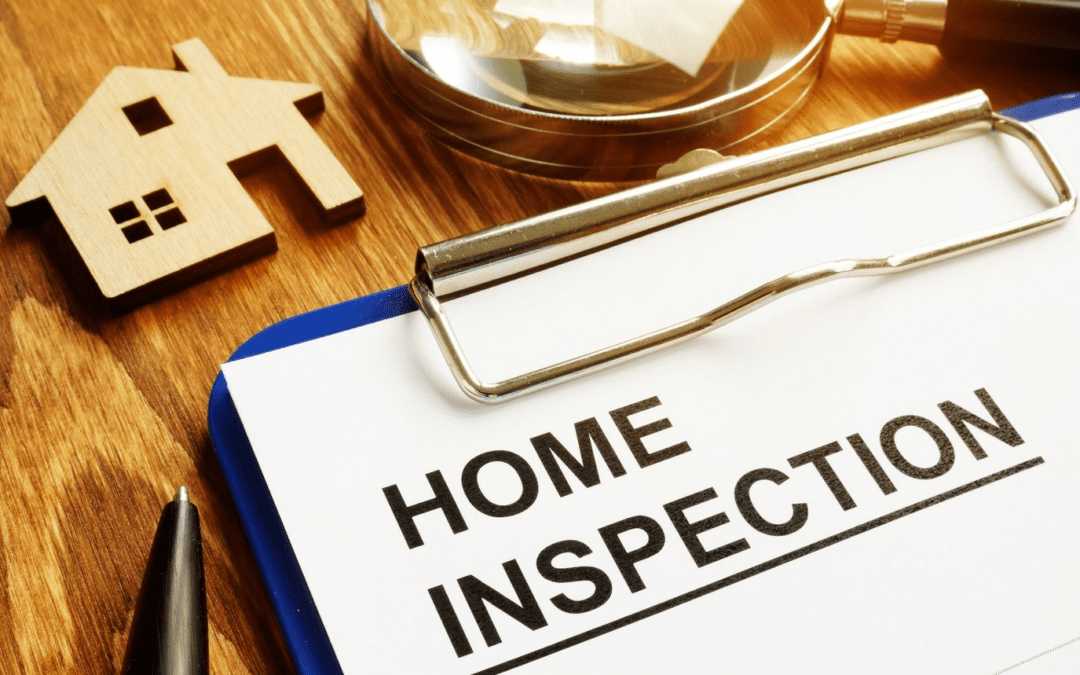
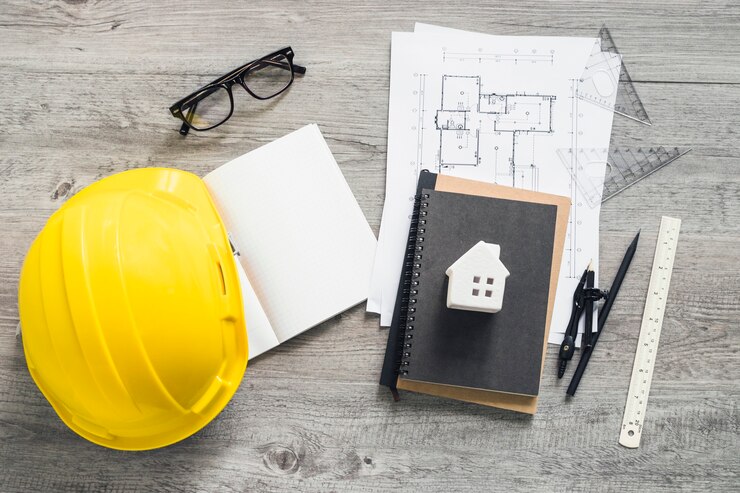

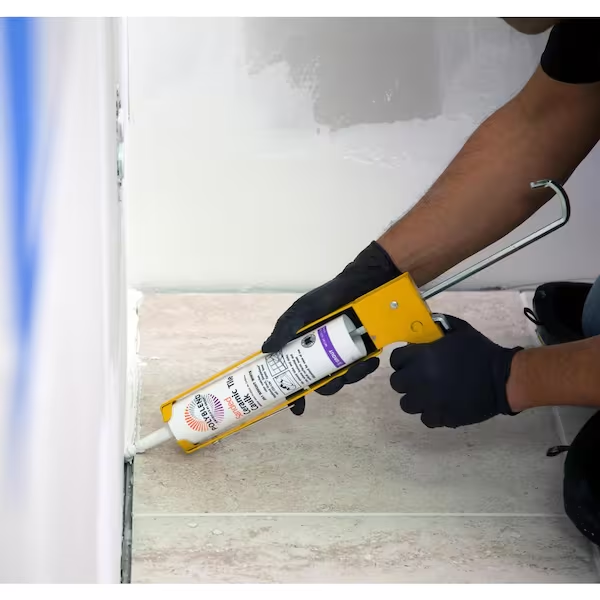

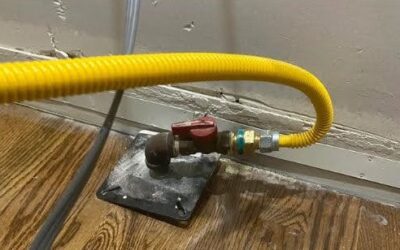
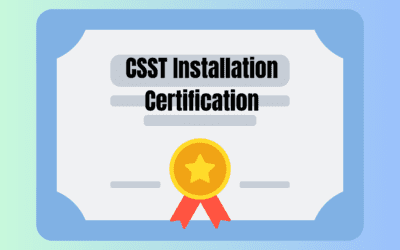
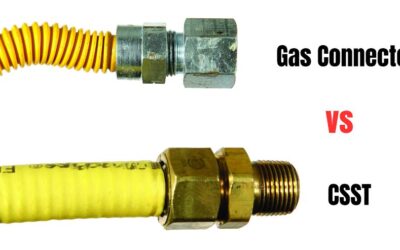

0 Comments